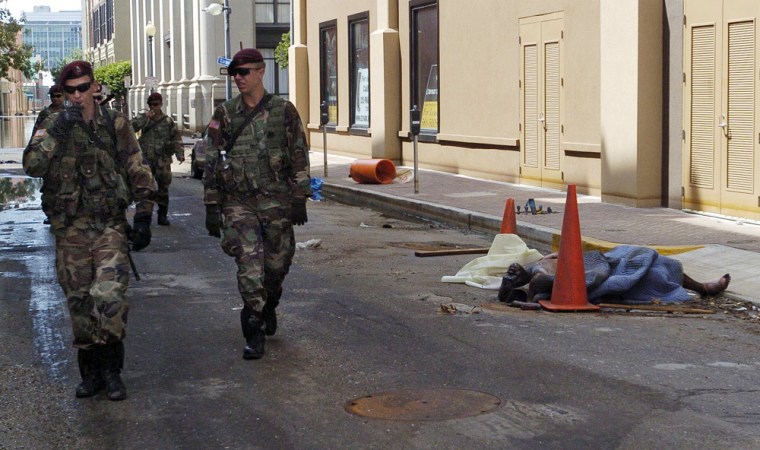With the waters receding, New Orleans faces a ghastly task of epic dimensions not seen by an American city in perhaps a century: collecting, identifying and then burying potentially thousands of corpses, many of them bloated, decayed or mangled beyond recognition.
Already, officials said they have 25,000 body bags on hand in Louisiana, and a temporary warehouse morgue is being readied to handle 5,000 dead.
The challenge, though, is more than a question of space and equipment. Among other things: How do you establish the victims' names, especially when many of them were so poor they probably did not even have dental records? And how do you return the dead to their relatives when no one knows where the family members are?
In the confusing tangle of federal, state and local workers here, a preliminary plan has emerged to deal with the bodies.
"The mayor is very strong on the fact that you handle the remains with dignity and respect, especially considering the celebration of life that we have in New Orleans," said Sally Forman, a spokeswoman for Mayor C. Ray Nagin.
Gathering information for identification
At two collection sites — one at the corner of Interstate Highways 10 and 610 and one in neighboring St. Bernard Parish — federal mortuary teams collect any information that may help identify a body, including the coordinates of where each corpse was found.
They have also collected whatever personal effects were on the bodies, in hopes that something — say, a hairbrush — might be used later to identify the victims.
At the temporary morgue set up in nearby St. Gabriel, the bodies are photographed, and forensic workers hope to use dental X-rays, fingerprints and DNA to identify them.
The bodies that can be identified will be turned over to a funeral home of the family's home choice for burial. As for the bodies that cannot be identified, "the sites for burial have not been chosen," said Melissa Walker, a spokeswoman for the Louisiana Department of Health and Hospitals.
Identifying the dead will be complicated by the intense New Orleans heat some corpses have been exposed to. Also, being submerged in water can damage fingerprints quickly, said Amy Mundroff, a forensic anthropologist who worked on identifying victims after the Sept. 11 attacks (more than 2,700 dead at the World Trade Center alone) and the crash of TWA Flight 800 off Long Island in 1996.
Dental records rare among destitute population
Dental X-rays could prove helpful, but those rely on a match with a person's dental records. And such records could be difficult to track down — if they are available at all — for many of the destitute residents here. It is also possible that Katrina destroyed some dentists' records along with their offices.
DNA in bones is long-lasting. But few victims are likely to be found with personal effects — hairbrushes, toothbrushes and the like — that could yield DNA samples for comparison, Mundorff said.
A DNA match can also be done with a sample from a victim's kin. But the relatives of Katrina's victims are scattered across the country now, with no notion of when they can return.
"The families are so dispersed," Mundorff said. "It'll be months and years until everybody is identified, I'd assume."
A week and a half after the storm's fury, there are only hints at what the final number might be. In Mississippi, the death toll stands at around 200 and counting. In New Orleans, the mayor at first speculated thousands, then suggested 10,000.
Katrina could be deadliest disaster in a century
That could make Katrina the worst natural disaster in the United States in a century or more. In 1900, some 6,000 to 12,000 people were killed by a hurricane that hit Galveston, Texas. The death toll in the 1906 San Francisco earthquake and fire has been put at anywhere from about 500 to 6,000.
Over the next few weeks, the Army Corps of Engineers, which is overseeing the prodigious task of pumping the floodwaters out of New Orleans, is concerned bodies may clog the pumps or otherwise become trapped in the machinery.
John Rickey of the Corps said Thursday he knew of no such incidents so far. But he added: "It's got a huge focus of our attention right now. Those remains are people's loved ones."
